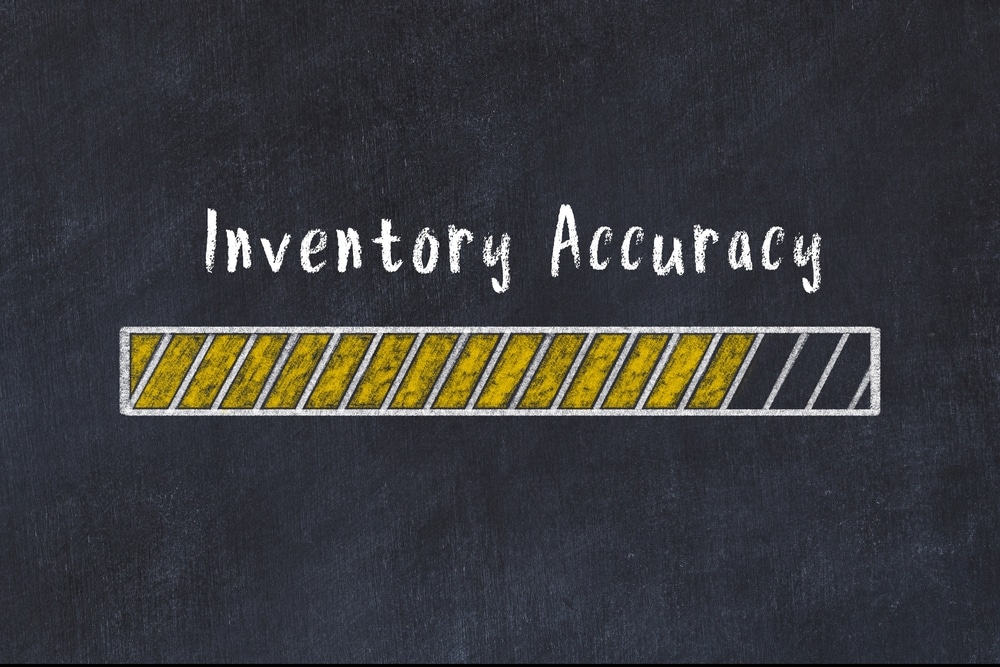
Are you wondering how to navigate inventory management effectively? Much of it hinges on understanding key Inventory KPIs. These metrics are pivotal for refining stock levels, optimizing costs, and ensuring customer satisfaction. In this article, we’ll unpack these vital indicators, their calculations, and precisely why they’re indispensable for a robust inventory KPI strategy.
Key Takeaways
- Inventory KPIs are critical for understanding and optimizing stock levels, which can lead to reduced costs, increased sales, and better customer satisfaction. Using inventory KPIs, businesses can track sales, turnover, demand, and customer behavior, and use dedicated inventory tracking systems to improve accuracy.
- Key inventory KPIs, like inventory turnover rate, days sales of inventory (DSI), gross margin return on investment (GMROI), and order fill rate, aid in monitoring and improving inventory processes. Businesses should compare these metrics against industry standards for proper benchmarking and strive to maintain optimal inventory turnover between two and four.
- To effectively implement inventory KPIs, businesses should set SMART goals, use inventory management software like a WMS for automated tracking, and regularly review and adjust KPIs based on changing business needs and market conditions. Regular inventory audits and involving department managers in KPI reviews can also help maintain control and optimize stock procedures.
The Importance of Inventory KPIs in Business Operations
Inventory KPIs, also known as key performance indicators or inventory metrics, are like the compass for business operations. They provide direction, helping businesses navigate the complex landscape of inventory management. These metrics shed light on numerous facets such as:
- Sales
- Turnover
- Demand
- Customer behavior
These insights offer valuable information for decision-making.
But why should businesses pay attention to inventory KPIs? The answer lies in their potential to revolutionize business operations. Effective tracking of these KPIs enables businesses to optimize their stock levels and manage inventory movements more efficiently. This can lead to reduced costs, increased sales, and enhanced customer satisfaction. After all, a store that always has what the customer wants is a store that customers love to visit.
Pro tip: Inventory accuracy is a critical KPI that reflects the true inventory levels, directly affecting other business decisions. This is where inventory tracking systems come into play. The employment of a Warehouse Management System (WMS) like Logimax can significantly improve inventory levels and sales order management, resulting in more streamlined operations and increased inventory management effectiveness.

Top Inventory Management KPIs to Track
Armed with an understanding of the importance of inventory KPIs, it’s time to examine the key ones worth tracking. Some of the most common are:
- Inventory turnover rate
- Days sales of inventory (DSI)
- Gross margin return on investment (GMROI)
- Order fill rate
Each of these KPIs plays a unique role in helping businesses monitor and improve their inventory management processes.
Let’s delve into further detail for each of these KPIs.
Inventory Turnover Ratio
Imagine you’re at a fruit market. You’d likely choose the freshest fruits, right? Just as the freshness of fruits matters to you, inventory turnover matters for businesses. The inventory turnover rate measures how many times a business sells through and replaces its inventory within a specific period. This rate is calculated by dividing the Cost of Goods Sold by the Average Inventory.
The inventory turnover ratio is critical because it provides insights into how efficiently a company is managing its inventory. Here are some key points to understand about this ratio:
- A high ratio indicates that the company is selling its goods quickly
- A low ratio suggests inefficiency in turning over inventory
- This metric is central to comprehending a company’s operational health and financial stability
- It’s like a health check-up for businesses, highlighting the efficiency of their inventory management.
A high inventory turnover ratio suggests efficient inventory management. On the other hand, a low turnover can indicate overstock or slow-moving stock. Generally, optimal stock levels have a turnover rate between two and four. For relevant assessments and strategic decisions, it’s advisable for businesses to benchmark their inventory turnover ratios against industry standards. This helps maintain an efficient balance between meeting customer demands and avoiding excess inventory.
Days Sales of Inventory (DSI)
Days Sales of Inventory (DSI) is another key performance indicator that measures the efficiency of inventory management. It calculates the time it takes for stock to be sold.
A lower DSI value, or weeks on hand rate, indicates a more rapid turnover of inventory, which implies efficient inventory movement and a potential positive impact on cash flow. In other words, the lower the DSI, the faster the cash comes in.
For an accurate performance assessment of DSI, it’s recommended to compare it against either industry benchmarks or the business’s historical performance data. This provides a clearer picture of how well the business is doing in terms of managing its inventory.
Gross Margin Return on Investment (GMROI)
Gross Margin Return on Investment (GMROI) is a powerful inventory KPI that provides a snapshot of the profitability of your inventory investment. Think of gross margin as the amount of money a business keeps per dollar of sales after deducting the costs of producing the items sold.
The significance of the gross margin percent as an inventory KPI is that it indicates the level of profits generated from inventory investments. So the higher the gross margin, the higher the profits.
GMROI takes this a step further. It measures inventory efficiency by comparing gross margin to the average inventory cost. This provides insights into how efficient a business’s inventory investments are, serving as a guiding metric for future investment decisions.
Order Fill Rate
Finally, let’s talk about the order fill rate. This KPI measures the number of customer orders filled on time and as expected. Why does this matter? Well, the order fill rate directly influences customer satisfaction. A higher order fill rate indicates more satisfied consumers, who are more likely to return and make future purchases.
The Perfect Order Rate KPI goes hand-in-hand with the order fill rate. The metric measures the percentage of orders that are delivered on time and without damage. It also ensures that the documentation is accurate. This KPI is a testament to the effectiveness and efficiency of a business’s order processing and fulfillment systems.
However, service level targets can vary depending on the significance of the stock item, its forecasted demand, and volatility. Higher service levels are set for key items with consistent demand, and lower service levels are set for less critical items with variable demand. Monitoring customer satisfaction and the rate of returns through the Perfect Order Rate is crucial, as a high rate of returns can point to issues with product quality or order fulfillment accuracy.

Implementing Inventory KPIs in Your Business
Having familiarized yourself with the key inventory KPIs, it’s time to explore how to implement them in your business. This involves setting SMART goals, utilizing inventory management software, and regularly reviewing and adjusting KPIs.
We will now dissect this further.
Setting SMART Goals
Setting SMART goals is a crucial first step towards the implementation of inventory KPIs. These are goals that are:
- Specific
- Measurable
- Achievable
- Relevant
- Timely
By setting SMART goals for your inventory KPIs, you ensure that they align with your company’s strategic objectives and are achievable.
But how do you tailor inventory management KPIs to the specific objectives of a business unit? A focus on enhancing effectiveness and bolstering the overall strategic goals is vital. This ensures that you’re not just tracking KPIs for the sake of it, but they serve a definite purpose in driving your business forward.
Starting with the proper measurement of elements, inventory KPIs should be limited to a number of achievable metrics. Excluding overambitious stretch goals is essential to ensure practical outcomes. After all, what’s the point of setting a goal if it’s not achievable? By doing so, you set your business up for success, one KPI at a time.
Utilizing Inventory Management Software
Having set your SMART goals, the next step is the use of inventory management software. This software, which includes warehouse management systems (WMS), increases efficiency by using dashboards for automated tracking of KPIs, reducing the need for manual inputs. It’s like having a personal assistant dedicated to managing your inventory KPIs.
Sophisticated inventory management systems like Logimax WMS come with comprehensive reporting tools that bolster the accuracy of forecasts and business intelligence. This software provides accurate insights into your inventory, helping you make informed decisions.
The implementation of real-time inventory management systems can:
- Negate challenges such as limited visibility into inventory statuses
- Enhance stock level optimization
- Provide real-time tracking for maintaining an efficient inventory turnover
- Offer precise sales data and stock forecasts
Remember, inventory management or warehouse management software should be capable of automatically monitoring and reporting metrics for stock across the entire business, acting as an effective inventory management system.
Regularly Reviewing and Adjusting KPIs
The implementation of KPIs is not a one-off event. It’s an ongoing process that requires regular reviews and adjustments. Inventory KPIs should be dynamic to accommodate changing business needs and market conditions. This ensures that your KPIs stay relevant and effective over time.
Following the initial establishment of KPIs, the next steps include:
- Defining, documenting, and communicating KPIs
- Training teams on how to track and measure KPIs
- Creating benchmarks to compare performance against
- Implementing a scheduled review process to maintain the relevance and effectiveness of KPIs
By following these steps, everyone in your team will be on the same page and know exactly what to track and why.
Pro tip: Conducting regular inventory audits is a key part of maintaining control over supply and optimizing stock control procedures. This feeds into the regular KPI review cycle. Also, involving department managers is crucial to understand shifts in tasks and the influence of KPIs on team dynamics, such as competition or collaboration.
Overcoming Common Challenges in Inventory Management

Inventory management is certainly not without its challenges. However, by understanding these challenges and how to overcome them, you can optimize your inventory management processes and enhance your supply chain management.
We will now examine these common challenges and their potential solutions.
Managing Stock Levels
Managing stock levels effectively is like walking a tightrope. On one side, you have excess stock, and on the other, you have stockouts. Both can cause financial concerns and marketing catastrophes for businesses.
Businesses can avert these issues by leveraging the stock-to-sales ratio to optimize stock levels, cut down holding costs, and minimize stockouts. It’s like having a roadmap that guides you to maintain the right amount of stock at the right time.
Additional strategies for managing stock levels include:
- Conducting regular ‘inventory days on hand’ to maintain lean inventory levels
- Restocking as required
- Employing ABC analysis for effective high-value item management
- Establishing strategic partnerships with suppliers
- Focusing on relevant inventory KPIs to optimize inventory management and increase profitability
Remember, inventory carrying costs are substantial, so managing stock levels effectively can significantly reduce these costs.
Forecasting Demand Accurately
Accurate demand forecasting predicts what your inventory will look like in the future, helping you prepare accordingly. In fact, smooth forecasting can potentially lower inventory costs by 10% or more by reducing overstocking and understocking.
However, mismanagement of demand forecasting can lead to a decline in inventory turnover rates, resulting in overstocking. This is where inventory optimization software proves beneficial. By investing in this software, businesses can improve demand forecast accuracy, effectively setting replenishment rules by incorporating accurate sales data and market conditions.
Advanced tools enhance demand forecasting by identifying market trends, supporting the maintenance of optimal inventory levels. This way, you’re not just reacting to changes in demand, but proactively preparing for them.
Reducing Inventory Shrinkage
Inventory shrinkage is the silent killer of inventory management. Inventory shrinkage occurs when there is a reduction in inventory due to:
- theft
- damage
- misplacement
- administrative errors
This can impact the accuracy of inventory management within the supply chain.
Inventory shrinkage can be mitigated by:
- Aligning inventory reports with sales records, ensuring accurate tracking
- Managing stock levels effectively
- Conducting surprise audits to uncover discrepancies in inventory counts
- Deter employee theft by creating unpredictability in audit schedules
Employee education about the impacts of inventory shrinkage can foster an understanding of how shrinkage affects the overall business. Ecommerce businesses can also reduce inventory shrinkage by outsourcing to third-party logistics (3PL) providers, leveraging their expertise in professional fulfillment and secure inventory management.

Logimax WMS: Enhancing Inventory KPI Management
At Logimax, we understand that mastering inventory management is key to operational success. Our Warehouse Management System (WMS) is designed to integrate seamlessly with your existing systems, offering robust tools to track and optimize inventory KPIs effectively. Here’s how Logimax WMS can elevate your inventory management:
- Real-Time Inventory Tracking Logimax WMS provides real-time visibility into inventory levels, movements, and status across your warehouse. This ensures that your inventory turnover rate, DSI, and other critical KPIs are always up-to-date, allowing for timely and informed decision-making.
- Automated Reporting and Analytics With automated reporting and analytics, Logimax WMS helps you generate accurate and comprehensive reports on key inventory KPIs such as GMROI and order fill rate. These insights enable you to benchmark performance against industry standards and identify areas for improvement.
- Advanced Forecasting and Demand Planning Our WMS incorporates advanced forecasting tools that analyze historical data and market trends to predict future demand. This helps maintain optimal stock levels, minimizing overstock and stockouts, and improving overall inventory turnover.
- Seamless Integration Logimax WMS integrates smoothly with other supply chain management systems, providing a unified platform for managing all aspects of your warehouse operations. This integration ensures that data flows seamlessly between systems, reducing manual entry and errors.
- Customizable Dashboards Customizable dashboards in Logimax WMS allow you to monitor the KPIs most relevant to your business in real time. This flexibility ensures that you can focus on the metrics that matter most, aligning with your strategic objectives.
- Improved Order Fulfillment Enhance your order fill rate and perfect order rate with Logimax WMS’s efficient order processing and fulfillment capabilities. By optimizing picking, packing, and shipping processes, you can ensure timely and accurate order delivery, boosting customer satisfaction.
- Inventory Accuracy and Shrinkage Control Logimax WMS helps maintain high inventory accuracy through regular cycle counts and discrepancy checks. By minimizing inventory shrinkage due to theft, damage, or errors, you can ensure the reliability of your inventory data.
- Scalable Solutions Whether you are a small business or a large enterprise, Logimax WMS scales with your growth. Our solutions are designed to support diverse industries including 3PL, cold storage, manufacturing, distribution, and retail, ensuring that your inventory management processes remain robust and efficient.
By leveraging Logimax WMS, you can transform your inventory management, ensuring that your business operates at peak efficiency and remains competitive in the market. Trust Logimax to provide the tools and insights needed for mastering inventory KPIs and driving success in your warehouse operations.
Summary
In conclusion, inventory KPIs play a vital role in modern business operations. They provide businesses with the tools to manage their inventory effectively, reduce costs, increase sales, and enhance customer satisfaction. Through KPIs like the inventory turnover rate, DSI, GMROI, and order fill rate, businesses can gain valuable insights into their inventory management processes and make informed decisions.
By setting SMART goals, utilizing inventory management software like LogimaxWMS, regularly reviewing and adjusting KPIs, and addressing common challenges in inventory management, businesses can optimize their operations and drive greater success. Remember, the key to effective inventory management lies in your ability to leverage these essential KPIs for optimal management.
Ready to optimize your inventory management and drive operational success? Discover how Logimax WMS can transform your warehouse operations today. Contact us for a demo and see the difference Logimax can make for your business.
Frequently Asked Questions
How do you measure inventory?
To measure inventory, start by calculating the average monthly inventory. This is done by adding the beginning inventory for each month and the ending inventory of the last month, then dividing the total by 12. This method helps to smooth out any fluctuations. Additionally, important metrics to determine include the inventory turnover rate, days of inventory on hand, and weeks on hand, which require specific formulas for calculation.
What is inventory turnover as a KPI?
Inventory turnover is a key performance indicator that measures how often a company sells and replaces its inventory within a specific period. This KPI helps assess the efficiency of inventory management. A high inventory turnover indicates effective sales and stock replenishment processes, while a low turnover can suggest overstocking or inefficiencies in moving inventory.
What are inventory performance measures?
Inventory performance measures include:
Weeks of Supply: Indicates how many weeks’ worth of inventory is available based on current sales rates.
Sell-Through Rate: Measures the percentage of inventory sold during a specific period.
Gross Margin Return on Investment (GMROI): Shows the profitability of inventory investments by comparing gross margin to the average inventory cost.
Sales by Category: Tracks sales performance across different product categories.
Stock Turn: Another term for inventory turnover, indicating how many times inventory is sold and replaced over a period.
How can Inventory KPIs improve business operations?
Tracking inventory KPIs can optimize stock levels, reduce holding costs, increase sales, and improve customer satisfaction. By understanding and managing these KPIs, businesses can make more informed decisions, leading to more efficient inventory control and better overall performance.
How can I implement Inventory KPIs in my business?
To implement Inventory KPIs effectively:
Set SMART goals (Specific, Measurable, Achievable, Relevant, Timely) to align with your business objectives.
Utilize inventory management software or a Warehouse Management System (WMS) like Logimax WMS for automated tracking and reporting.
Regularly review and adjust KPIs to ensure they remain relevant and effective based on changing business needs and market conditions.



